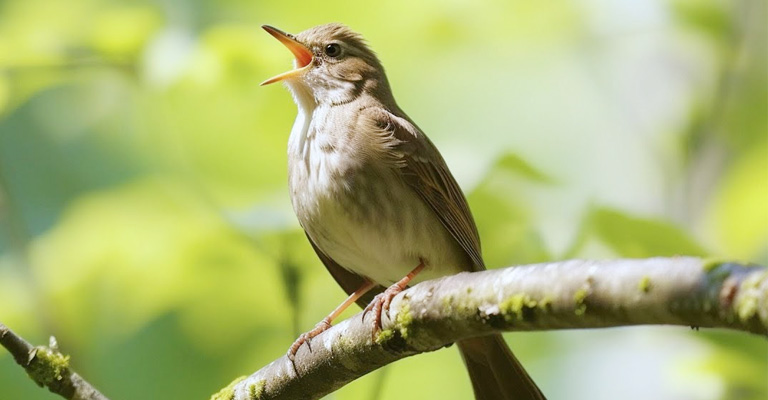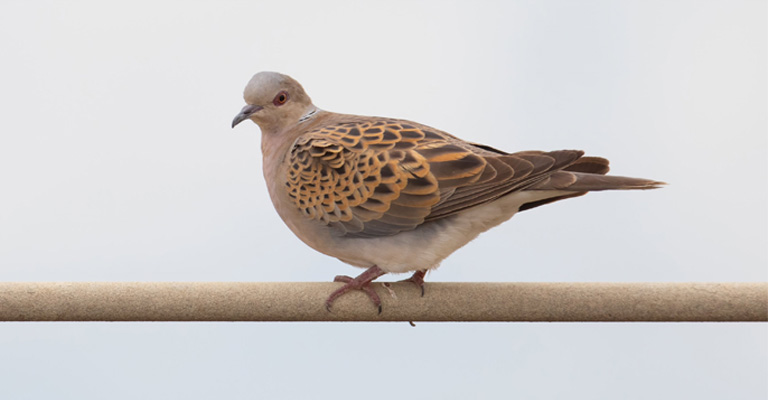In the world of birdsong, the vast array of sounds can be as intriguing as they are diverse. Among the symphony of whistles, chirps, and melodies, there exists one particularly enigmatic sound – the swinging “wee-woo.”
This distinctive auditory phenomenon has perplexed bird enthusiasts and nature lovers for years, leaving them wondering which avian artist is responsible for this charming serenade.
The “wee-woo” sound is neither a typical bird call nor a melodic song, but rather a unique auditory experience that seems to defy conventional ornithological categorization.
Yet, as with every mystery of the natural world, there is an explanation waiting to be uncovered. In this exploration, we will delve into what bird makes a swinging wee woo sound and why.
In our quest to unravel the mystery of the swinging “wee-woo” sound, we have ventured into the captivating world of avian melodies. While this unique sound may have initially confounded us, our journey has shed light on its origins and significance.

What Bird Makes a Swinging Wee Woo Sound and Why?
When it comes to identifying a bird that makes a distinctive swinging “wee-woo” sound, several avian species might come to mind.
This sound is intriguing, and while it may not be a standard ornithological description, it can be associated with certain birds known for their unique vocalizations. In this exploration, we’ll delve into some bird species that produce similar sounds and why they do so.
The Whip-poor-will: A Nocturnal Chorus
The Eastern Whip-poor-will (Antrostomus vociferus) is often associated with a call that sounds like “whip-poor-will.” This repetitive vocalization can indeed resemble a swinging “wee-woo” sound.
These birds are known for their nocturnal habits and sing primarily during the evening and night. They use their distinctive call to establish territory and attract potential mates.
The “whip-poor-will” call is actually the male’s song, and it serves as an advertising mechanism. By loudly and repetitively singing their name, they let other whip-poor-wills know that this territory is taken and to attract potential females.
The “wee-woo” quality of this call can be a result of the bird’s unique vocal apparatus and the acoustics of their habitat.
Common Nighthawks: Peents and Booms
Another bird species that might fit the description of a swinging “wee-woo” sound is the Common Nighthawk (Chordeiles minor). These birds are known for their aerial displays and distinct vocalizations.
During their courtship displays, male Common Nighthawks emit a loud “peent” sound, which is a nasal, buzzy call. This peent is often followed by a series of booming or “booming” calls, which can indeed resemble a “wee-woo” sound.
These vocalizations serve to establish territories, attract females, and communicate with other nighthawks.
The “wee-woo” quality of the booming call can be attributed to the resonance created by their open mouths as they dive through the air during their display flights. This sound, along with their impressive aerial acrobatics, helps them secure a mate.
Mourning Doves: A Soft Coos and Gentle Whoos

While not an exact match for the swinging “wee-woo” description, Mourning Doves (Zenaida macroura) are worth mentioning. These birds are known for their gentle and mournful cooing sounds, which might be interpreted as “who-oo, who-oo” or “coo-coo-coo.”
Mourning Doves use their cooing calls primarily for courtship and communication. These soft and soothing vocalizations are part of their repertoire to attract a mate and maintain contact with their partner.
Although their sounds may not precisely match “wee-woo,” they add to the symphony of sounds in many natural settings.
Woodpeckers: Drumming and Calls
Some woodpecker species are known for producing sounds that can resemble a “wee-woo” pattern. Woodpeckers are famous for their drumming, which is a rapid and repetitive series of strikes against a tree or other resonant surfaces.
These drumming sounds are primarily used for communication, including territorial disputes and attracting mates. Additionally, woodpeckers may have various calls and vocalizations, such as sharp “chik” or “peek” notes, which can be heard in the woods.
While these sounds might not precisely match the “wee-woo” description, they contribute to the overall avian soundscape in wooded habitats.
Why Birds Make Such Sounds: Communication and Reproduction

Birds are renowned for their diverse and melodious vocalizations, which serve a multitude of functions vital to their survival and reproduction.
These sounds are not merely random chirps; they are sophisticated forms of communication that have evolved over millions of years to facilitate various aspects of avian life.
Territorial Defense and Boundary Establishment
One of the primary reasons birds make sounds is to establish and defend territories. This is especially crucial during the breeding season when competition for resources and mates intensifies. Birds often have specific songs or calls that signify ownership of a particular area.
When a bird belts out its unique song, it effectively communicates to others of its kind that this territory is taken. It’s a way of saying, “This space is mine, stay out!” The swinging “wee-woo” or “whip-poor-will” sounds can serve this purpose by alerting intruders to steer clear.
Mate Attraction and Courtship Rituals
Birdsong plays a central role in courtship and mate attraction. Many male birds are renowned for their elaborate and melodious songs, which they use to serenade potential mates.
These songs are more than just pleasant melodies; they convey essential information about the singer’s fitness. A strong, melodious song can signal good health, vitality, and genetic superiority to potential mates.
In response, female birds often assess these songs carefully before choosing their partners. The ability to produce a captivating song can significantly enhance a male bird’s chances of finding a mate and passing on its genes.
Communication Within Pairs and Family Units
Birdsong isn’t limited to courtship and territorial defense; it’s also a means of maintaining communication within pairs and family groups. Mates often have unique vocalizations or calls that help them stay in touch, especially when foraging or defending their nest.
This communication is crucial for coordinating activities, such as locating food for their offspring and warning each other of potential threats. It’s a way for avian couples to strengthen their bonds and ensure the successful upbringing of their young.
Warning Signals and Predation Alerts
Birds are acutely aware of their surroundings, and they have developed vocalizations to signal danger. When a potential threat, such as a predator, approaches, birds often emit specific alarm calls.
These calls not only alert other members of their species to the danger but can also serve as a warning to nearby animals of different species.
In some cases, certain bird species even have distinct alarm calls for different types of predators, allowing others to identify the level of threat accurately.
Navigation and Group Coordination
Some bird vocalizations serve as navigational aids and help coordinate group activities. For example, during migratory flights, flocks of birds often engage in synchronized flying.
To maintain this coordination, they emit calls that help them stay in formation and make split-second decisions in flight. These vocalizations contribute to the efficiency and safety of collective movements.
Species Recognition and Avoiding Hybridization
Birds also use vocalizations to recognize members of their own species and distinguish them from other, similar-looking bird species. This is especially important in preventing hybridization, which can lead to the dilution of species-specific traits.
By exchanging recognizable calls and songs within their species, birds can ensure that they mate with individuals of the same species, preserving their unique characteristics and genetic integrity.
The diverse sounds produced by birds are not just random noises but rather sophisticated forms of communication.
These vocalizations play critical roles in establishing territories, attracting mates, maintaining bonds within pairs and families, warning of danger, coordinating group activities, and preserving species identity.
FAQs
What is the difference between a bird’s call and a bird’s song?
A bird’s call is usually a short, simple vocalization used for communication and specific purposes like alerting others to danger or maintaining contact. In contrast, a bird’s song is a more complex and often melodious vocalization primarily associated with courtship, mate attraction, and territory establishment.
Do all birds sing?
No, not all birds sing. While singing is common among many bird species, some birds, such as most waterfowl and many raptors, do not sing in the way songbirds do. These non-singing birds communicate through various calls and vocalizations suited to their needs and lifestyles.
Can birds hear each other’s calls and songs?
Yes, birds have highly developed auditory senses, and they can hear and interpret the calls and songs of other birds. Birdsong, in particular, plays a crucial role in mate attraction and territory establishment.
Why do birds migrate and sing during specific seasons?
Birds migrate to find more favorable conditions for breeding, feeding, and survival. The timing of migration and singing is often linked to seasonal changes in temperature and daylight hours. Singing is more frequent during the breeding season, as it helps attract mates and establish territory.
What is the dawn chorus, and why do birds sing in the morning?
The dawn chorus is a natural phenomenon where birds sing more intensely and vocally during the early hours of dawn, just before sunrise. This behavior is associated with establishing territory and attracting mates.
Conclusion
The swinging “wee-woo” sound, as it turns out, is not the creation of a single bird species but a delightful chorus of several feathered performers.
Birds like the Eastern Whip-poor-will, the Common Poorwill, and the Chuck-will’s-widow are among those that contribute to this captivating symphony.
Their vocalizations, often heard during the twilight hours, serve various purposes, from attracting mates to establishing territory.
Our exploration has revealed that these “wee-woo” sounds are not just auditory curiosities but essential components of the avian world’s rich tapestry. They remind us that nature’s melodies are as diverse as the birds themselves, each with its unique song and purpose.
As we conclude our journey, we find that the swinging “wee-woo” sound is a testament to the beauty and complexity of the natural world.
It serves as a reminder that there are still mysteries waiting to be uncovered in the world of birdsong, inviting us to continue our exploration of the avian realm with curiosity and wonder.